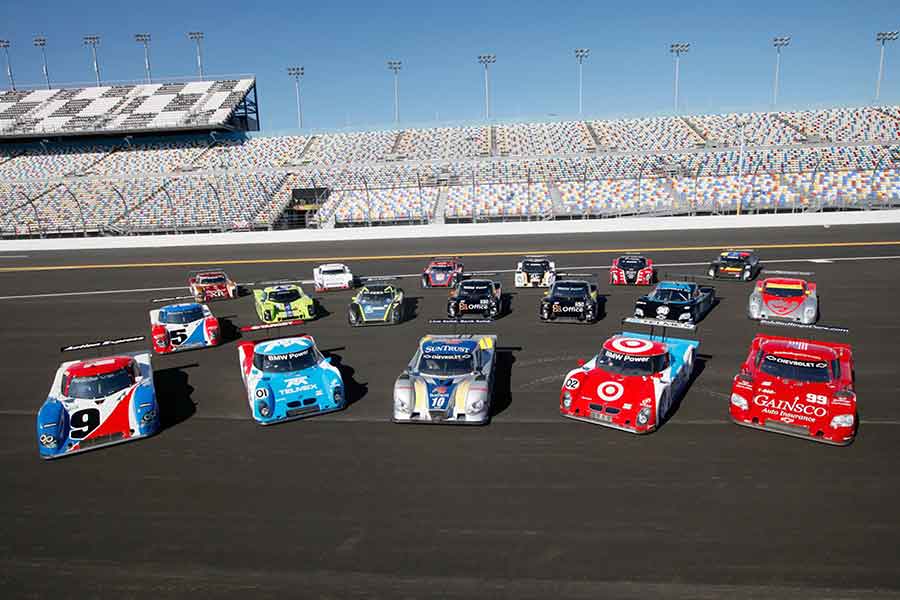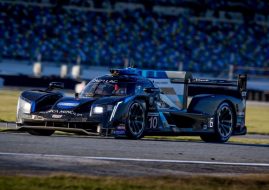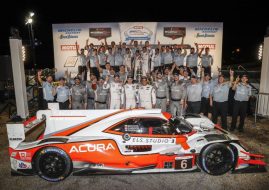Daytona Prototype - One Era is Over, a New Age Begins
After 14 glorious and very successful years, Daytona Prototype racing cars era came to an end with new Prototype race cars set to debut in 2017.
2003 Daytona 24h debut
The story has begun when the founder of the Grand-Am Rolex Sports Car Series, Jim France, Brumos team owner Bob Snodgrass, and driver Hurley Haywood sought to establish a fast, safe and affordable class of Prototypes. They created the framework roughly based on the Le Mans Prototypes and soon, the first models of the new sports cars were made and ready for the 2003 Daytona 24 hours race.
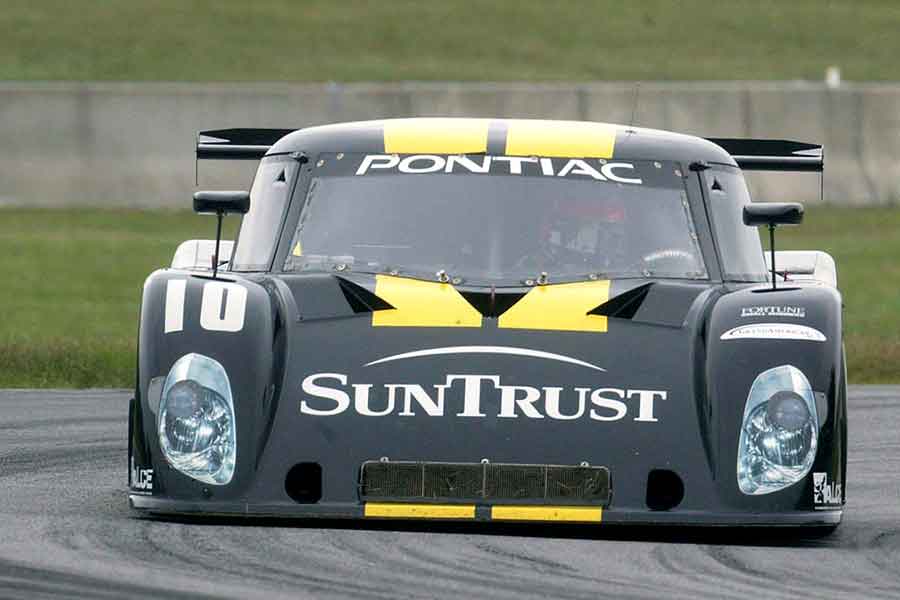
2003 Riley Mk XI Prototype
Available only to private teams
The new car was faster than LMP, but at the same time more dangerous to race at the tracks like Daytona. This model also was cheaper and simpler than the LMP cars which was one of the key factors of success. The series also regulated who could provide chassis and who could provide engines, based on the road-legal production from the major manufacturer, thus preventing teams from trying a unique chassis or engine which was another reduction of the costs. There was also a catch that major manufacturers could not run their own Prototypes in order to keep costs and competition level down.
The Daytona Prototypes were also smaller than Le Mans Prototypes and the engineers had more freedom in designing aerodynamic and safety elements. That’s why it wasn’t surprising how quickly the DP’s became popular and, over the years, hugely successful.

The 2007 winning Lexus of Chip Ganassi Racing
Three generations of the Daytona Prototype
The first generation of DPs was used from 2003 to 2007. Seven manufacturers had rights to supply chassis to the teams while for the second generation, from 2008 to 2012, that number was reduced to six. The third and the last generation of DP’s was used from 2012 until the end of the 2016 season.
Over the years, many major manufacturers, including Ford, Chevrolet, Toyota, Porsche, BMW, Honda, Pontiac, and Lexus, were engine suppliers to the teams running Daytona Prototypes. From 2007, all engines had to use standardized engine control units to better regulate engine performance.
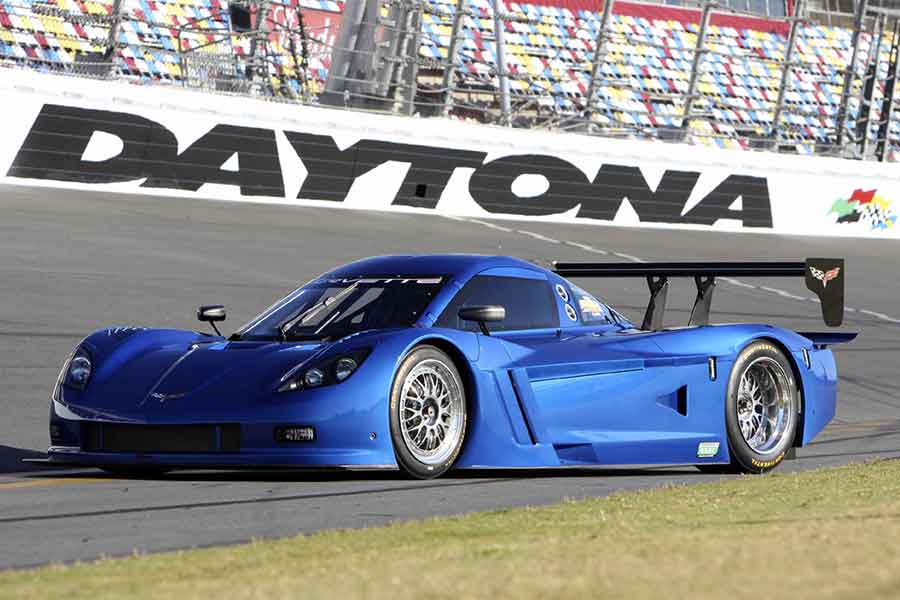
Chevrolet Corvette Prototype 2012
Iconic status
The start was far from perfectsix Daytona Prototypes entered the 2003 Daytona 24 hours but only two of them finished the race, far behind much lower GT class cars. When the problems were sorted out, the DP cars begun their domination in the Rolex Sports Car Series and Grand-Am. Daytona Prototypes scored 12 consecutive wins in the famous 24 hours race and earned iconic status among the drivers, the teams, and finally the fans.
“I remember when I first went to Daytona, we were doing laps in 1:53 or 1:54. Nowadays, we are running around in 1:38 which is a huge difference if you know that fundamentally it’s the same car,“ comments Christian Fittipaldi who scored his first win driving a Pontiac-Durant DP in 2004, and later also won back-to-back IMSA titles driving a Corvette DP.
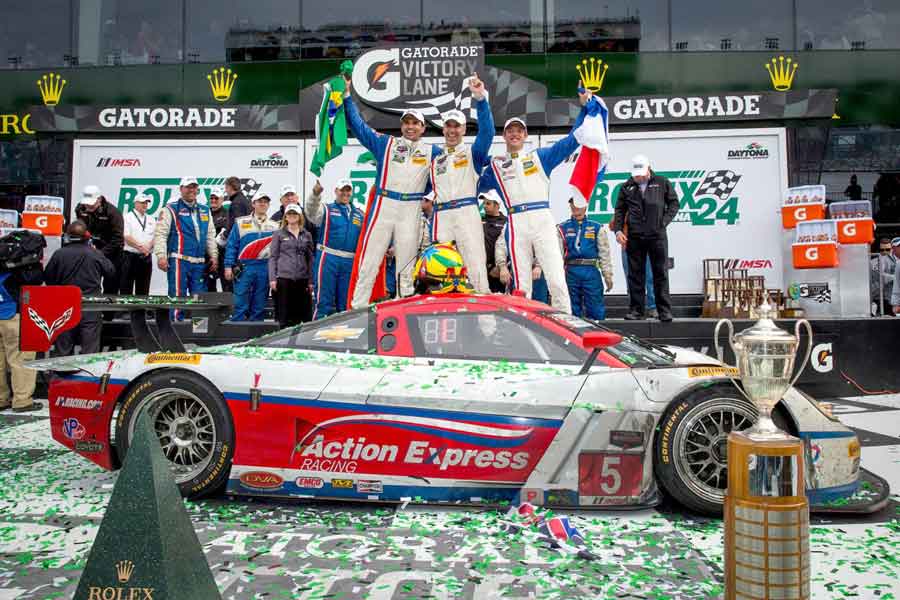
Action Express Racing #5 Corvette Prototype drivers celebrate their victory
One era ends, a new one begins
When the Rolex Sports Car Series merged with the ALMS in 2012 to form a unified road racing championship named United SportsCar Championship, DPs were being raced alongside the LMP2 prototypes from the ALMS as the main prototype class. In 2006, DP’s also were allowed to compete in Japan’s Super GT Championship, in the GT300 class.
However, the Daytona Prototypes have ran their course, and their age has come to an end. Many drivers expressed that they will miss the old models but also added they are happy about the innovations and are looking forward to the new challenges with the next generation of race cars.
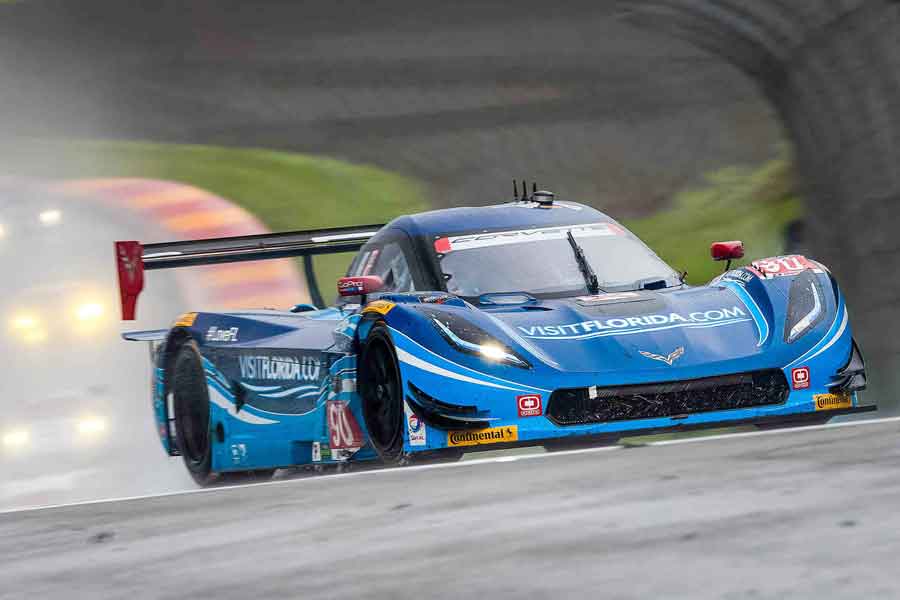
The #90 VisitFlorida.com Corvette Prototype at Watkins Glen, 2016
Daytona Prototype international is ready to hit the road in 2017
The 2017 Prototype class will include new Daytona Prototype international (DPi) race cars powered by a variety of different engine manufacturers. That will allow the DPi’s to enter some of the biggest races at the international level, but the new DPi remains ineligible for 24 Hours of Le Mans as only the cars fitted with Gibson V8 engine will be allowed to contest the in the LMP2 division at Circuit de la Sarthe next year.
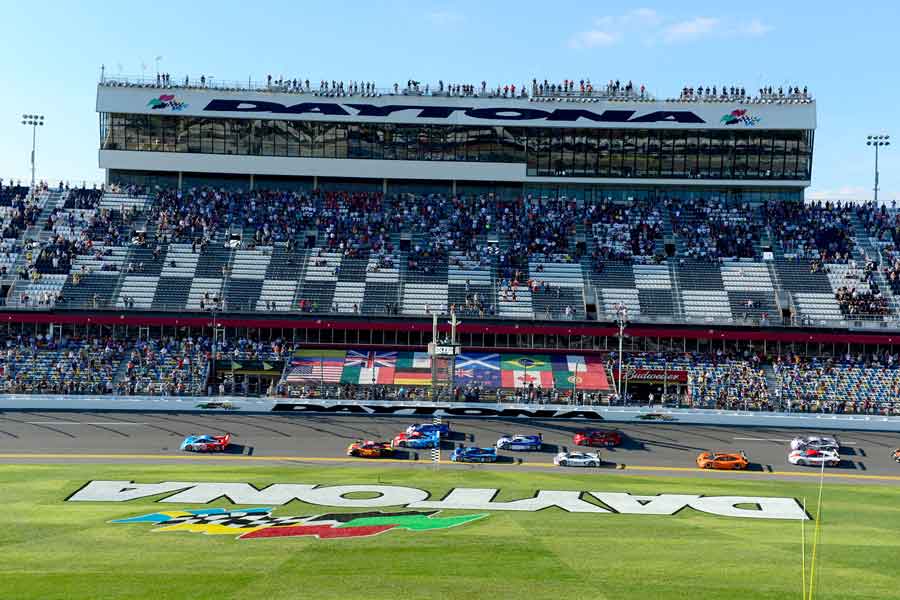
Daytona is waiting for the fresh prototypes in 2017
The 2017 IMSA DPi car is an ACO/FIA homologated 2017 LMP2 Prototype chassis from one of the four approved constructors (Dallara, Onroak Automotive, ORECA or Riley/Multimatic) fitted with IMSA-homologated, manufacturer-designed and branded bodywork and engines. Each participating DPi manufacturer partners with one of the four approved constructors and commit to a bodywork and engine package.
One chapter of racing history is closed and the new one starts next year. However, Daytona Prototype deserved its place in the history of motorsports, regardless of the success or the failure of the new model.
Video : DP test with Jordan Taylor at the Watkins Glen track
Photos: wikipedia.org, supercars.net, motorsportmagazine.com, autoconcept-reviews.com, autoracing1.com, news-journalonline.com, michelinalley.com.


